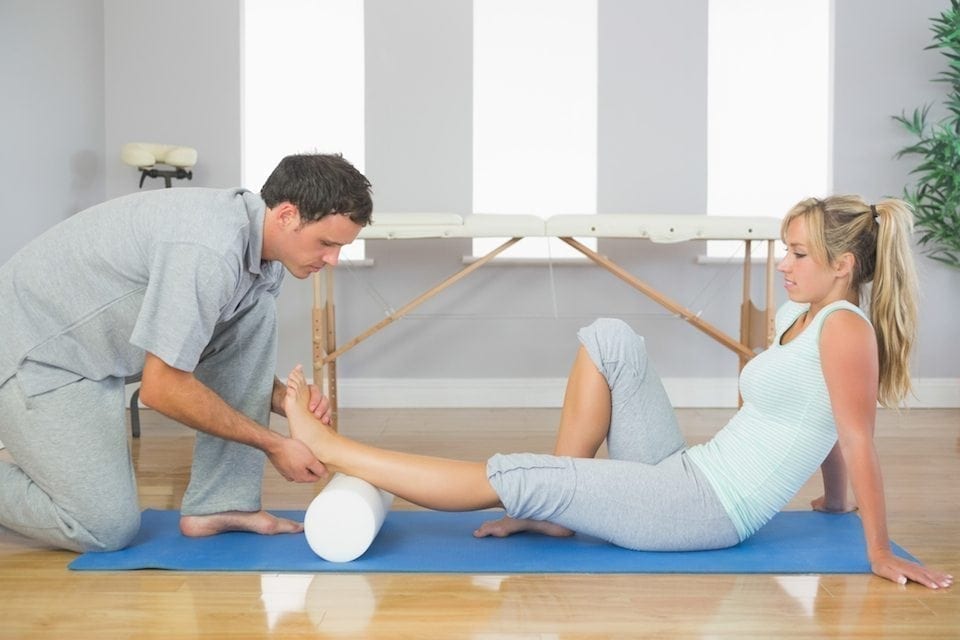Everyone has muscle tightness somewhere, which can limit your range of motion, contribute to poor posture, and create muscle imbalance that inevitably leads to pain and injury. Sports massages and active release therapy can do wonders to relieve the tension, but there are also self-release methods that when performed regularly at home can break up tension and improve mobility. Foam rollers are very handy tools used to release muscles that have become too tight to stretch. Lacrosse balls, or therapy massage balls, can also be used to accomplish this and are great when you are trying to get into a smaller, more specific spot.
You might be wondering, “I’m not an athlete, should I still use a foam roller?” The short answer to this question is, “Yes, of course, go get one!” But I’ll give you the long answer too.
Foam rollers are great for athletes and non-athletes alike. I see both patient populations at my practice and often assign the same foam roller exercises to each. This is because despite some of obvious differences between athletes and non-athletes there is one thing they both have in common, muscle tightness.
As I mentioned, muscle tightness is not limited to athletes—it happens to everyone. In fact, just sitting contributes to a significant amount of muscle tightness. Think about it: Most people spend at least eight hours of their day sitting at a desk and hunched over a computer. When we sit for such prolonged periods of time with bad posture, everything starts to tighten up—from your neck, down through your legs. Your hip flexors, TFL (tensor fasciae latae), IT Band, QL (quadratus lumborus), pecs, upper traps, and levator scap all tighten up and throw your body out of balance.
Tight hip flexors are especially influential when it comes to affecting other areas of your body. If you have pain in your back, leg, or even foot, the culprit is very likely your hip flexors. Getting in and releasing these muscles is the best way to break up tightness, create mobility, and reduce tension and pain.
I recommend my clients use a foam roller three times a week to really begin making a change in their body. If you are participating in physical activity, you should use the foam roller beforehand. Creating mobility is the first step on the path to a balanced body.
While rolling out on a foam roller can be helpful, actively releasing the muscles goes so much further. Here are some great self-releases you can perform using a foam roller or a lacrosse ball to help break up muscle tightness.
1. Hip Flexor Release
- Tape two lacrosse balls together.
- Lie on your stomach and place the double lacrosse ball just below your hipbone. Lean a tolerable amount of weight onto the lacrosse balls.
- Bend the knee on the side of the release back to a 90-degree angle. Swing your leg side to side in a tolerable range of motion.
- Repeat this in 30-second to two-minute intervals.
2. IT Band Release
- Lie on the side you wish to release.
- Place the foam roller under your bottom leg halfway, between your hip and knee. Slide your leg up and down along the foam roller, moving it from the top of the knee to the base of the hip.
- Locate the most tender area with the foam roller and stop. Bend your knee at a 90-degree angle, and then straighten.
- Repeat motion of bending and straightening knee for 10-15 seconds. You may repeat this with other areas along the IT band.
3. Pec Release
- Stand facing the wall.
- Place a lacrosse ball two inches below your collarbone and toward your armpit.
- Lean into the wall and move the ball right and left until you find a tender area.
- Move your arm and shoulder forward and back, then up and down. Lean your body more firmly into the ball as tolerated.
- Continue for 45 seconds or until the tension resolves.
Do you have a foam roller or a small therapy ball at home? How to you release muscle tension? Share in the comments!




